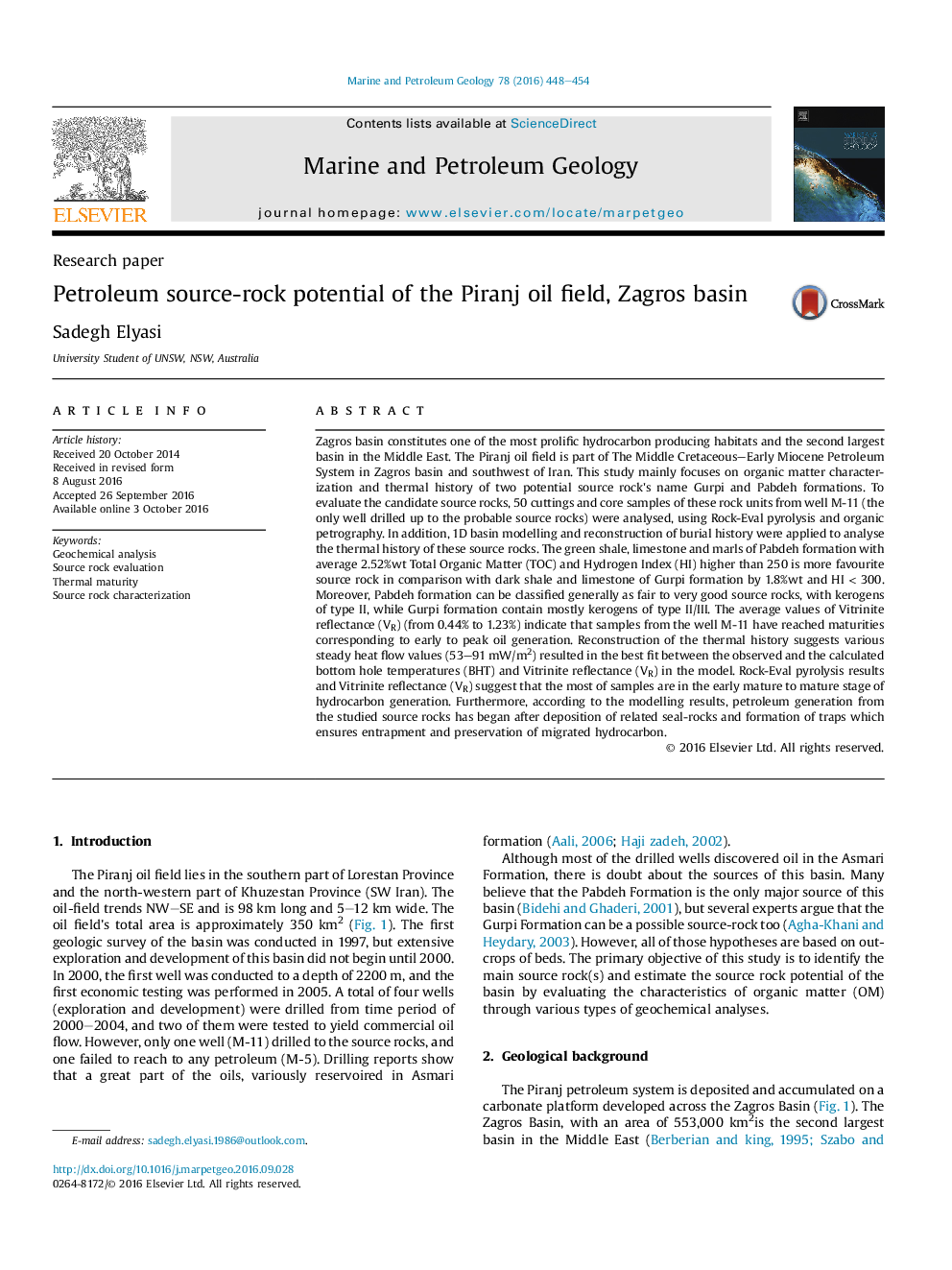| کد مقاله | کد نشریه | سال انتشار | مقاله انگلیسی | نسخه تمام متن |
|---|---|---|---|---|
| 6434400 | 1637149 | 2016 | 7 صفحه PDF | دانلود رایگان |

- In this study hydrocarbon production ability of one of the Iranian oil-field was evaluated.
- According to the analysis of this study it was discovered that the understudy oil-field has 2 potential source rock.
- Based on the results of the tests, the productivity of each source rock evaluated.
- At the final stage reconstruction of the burial model support the test results.
Zagros basin constitutes one of the most prolific hydrocarbon producing habitats and the second largest basin in the Middle East. The Piranj oil field is part of The Middle Cretaceous-Early Miocene Petroleum System in Zagros basin and southwest of Iran. This study mainly focuses on organic matter characterization and thermal history of two potential source rock's name Gurpi and Pabdeh formations. To evaluate the candidate source rocks, 50 cuttings and core samples of these rock units from well M-11 (the only well drilled up to the probable source rocks) were analysed, using Rock-Eval pyrolysis and organic petrography. In addition, 1D basin modelling and reconstruction of burial history were applied to analyse the thermal history of these source rocks. The green shale, limestone and marls of Pabdeh formation with average 2.52%wt Total Organic Matter (TOC) and Hydrogen Index (HI) higher than 250 is more favourite source rock in comparison with dark shale and limestone of Gurpi formation by 1.8%wt and HIÂ <Â 300. Moreover, Pabdeh formation can be classified generally as fair to very good source rocks, with kerogens of type II, while Gurpi formation contain mostly kerogens of type II/III. The average values of Vitrinite reflectance (VR) (from 0.44% to 1.23%) indicate that samples from the well M-11 have reached maturities corresponding to early to peak oil generation. Reconstruction of the thermal history suggests various steady heat flow values (53-91 mW/m2) resulted in the best fit between the observed and the calculated bottom hole temperatures (BHT) and Vitrinite reflectance (VR) in the model. Rock-Eval pyrolysis results and Vitrinite reflectance (VR) suggest that the most of samples are in the early mature to mature stage of hydrocarbon generation. Furthermore, according to the modelling results, petroleum generation from the studied source rocks has began after deposition of related seal-rocks and formation of traps which ensures entrapment and preservation of migrated hydrocarbon.
Journal: Marine and Petroleum Geology - Volume 78, December 2016, Pages 448-454